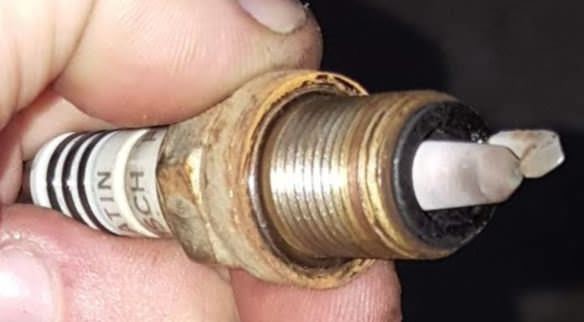For car enthusiasts and everyday drivers alike, understanding your vehicle’s health is paramount. Modern vehicles are equipped with sophisticated onboard diagnostic systems, and among the most valuable data points these systems provide is fuel trim. But Obdii What Do Fuel Trim Tell Us? This article delves into the meaning of fuel trim, how to interpret OBDII readings, and what fuel trim can reveal about your engine’s condition.
Fuel trim is a crucial parameter monitored by your car’s Powertrain Control Module (PCM). It represents the adjustments the PCM makes to the air-fuel mixture to maintain optimal combustion. Think of your engine as needing a precise recipe of air and fuel to run efficiently and cleanly. The ideal air-fuel ratio, known as stoichiometric, is approximately 14.7:1 (air to fuel). Oxygen sensors in your exhaust system constantly measure the oxygen levels and report back to the PCM. If the mixture isn’t perfect, the PCM uses fuel trim to make corrections.
There are two main types of fuel trim you’ll encounter when using an OBDII scanner:
-
Short Term Fuel Trim (STFT): This is a real-time, immediate adjustment. If the oxygen sensor detects a lean condition (too much oxygen), the STFT will increase positively, indicating the PCM is adding more fuel. Conversely, if it detects a rich condition (too little oxygen), STFT will decrease negatively, meaning the PCM is reducing fuel. STFT values are constantly fluctuating as the PCM makes quick adjustments to maintain the ideal air-fuel ratio under varying driving conditions. Ideally, STFT should oscillate around 0%, typically between -3% and +3%.
-
Long Term Fuel Trim (LTFT): This is a learned adjustment over time. If the PCM consistently has to make significant short-term fuel trim corrections (either positive or negative), it adjusts the LTFT to compensate. LTFT represents a more permanent correction to the base fuel map. High LTFT values, especially consistently above +10% or below -10%, can indicate an underlying issue that the PCM is trying to compensate for.
 OBDII fuel trim graphs showing short term and long term fuel trim data.
OBDII fuel trim graphs showing short term and long term fuel trim data.
So, what do fuel trim values actually tell us?
-
High Positive Long Term Fuel Trim (e.g., +10% or higher): This typically indicates a lean condition. The PCM is adding extra fuel over the long term to compensate for a lack of fuel or excess air. Common causes include:
- Vacuum leaks: Unmetered air entering the engine after the mass airflow sensor (if equipped) leans out the mixture.
- Low fuel pressure: A weak fuel pump or clogged fuel filter can restrict fuel delivery.
- Clogged fuel injectors: Partially blocked injectors reduce the amount of fuel injected.
- Intake air leaks: Leaks in the intake manifold or ducting can introduce extra air.
- Faulty oxygen sensors: Although less common, a malfunctioning oxygen sensor can incorrectly report a lean condition.
-
High Negative Long Term Fuel Trim (e.g., -10% or lower): This generally points to a rich condition, where the PCM is removing fuel. Possible causes include:
- Fuel injector leaks: Leaking injectors can add excess fuel to the cylinders.
- High fuel pressure: A faulty fuel pressure regulator can cause excessive fuel pressure.
- Faulty oxygen sensors: Again, a malfunctioning sensor can incorrectly report a rich condition.
- Restricted air intake: A clogged air filter or intake obstruction can reduce airflow, leading to a rich mixture.
It’s important to remember that fuel trim values are diagnostic clues, not definitive answers. A slightly elevated fuel trim within a few percentages might be normal, especially with variations in fuel quality or driving conditions. However, consistently high or low fuel trim readings warrant further investigation.
Using an OBDII scanner and software like ProScan, as mentioned in the original forum post, allows you to monitor these fuel trim values in real-time and even graph them over time. This can be invaluable in diagnosing engine issues. If you observe high long-term fuel trim, don’t immediately assume a major component failure. Start by checking for simple issues like vacuum leaks, inspecting your air filter, and considering the age and condition of your spark plugs and ignition components.
In conclusion, understanding OBDII fuel trim is a powerful tool for anyone interested in vehicle diagnostics. By monitoring and interpreting these values, you can gain valuable insights into your engine’s health and identify potential problems before they escalate into costly repairs. Fuel trim provides a window into the fine adjustments your car’s computer is making, and learning to read this data is a significant step towards becoming a more informed and capable car owner.
